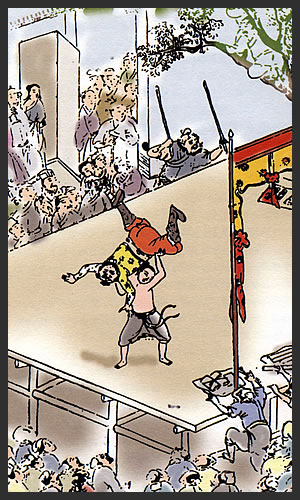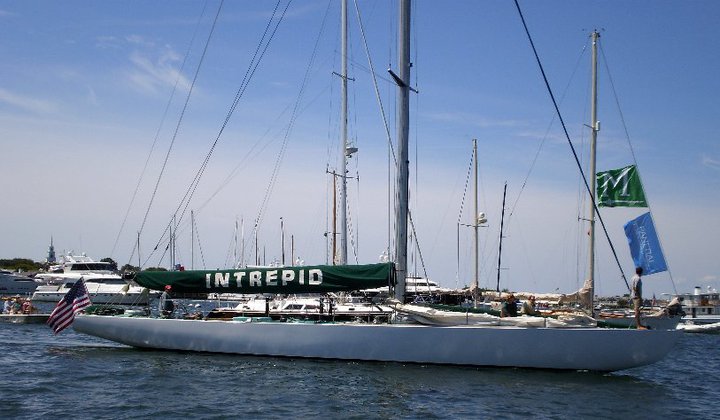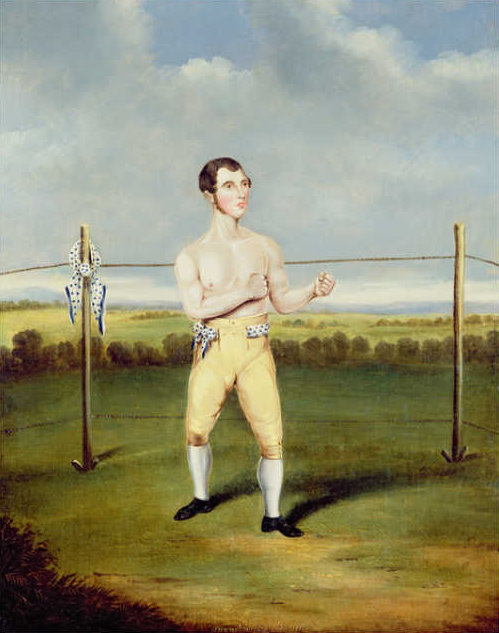|
Savateur
Savate (), also known as boxe française, savate boxing, French boxing or French footfighting, is a French kickboxing combat sport that uses the hands and feet as weapons combining elements of English boxing with graceful kicking techniques. Only foot kicks are allowed, unlike some systems such as Southeast Asian boxing or kickboxing, which allow the use of the knees or shins, but it allows strikes in any part of the body. ''Savate'' is a French word for "old shoe or boot". Savate fighters wear specially designed boots. A male practitioner of savate is called a tireur while a female is called a tireuse. Early history Savate takes its name from the French for "old shoe" (heavy footwear, especially the boots used by French military and sailors) (''cf.'' French-English loanwords sabot and sabotage and Spanish cognate ''zapato''). The modern formalized form is mainly an amalgam of French street fighting techniques from the beginning of the 19th century. Savate was then a type ... [...More Info...] [...Related Items...] OR: [Wikipedia] [Google] [Baidu] |
Charles Lecour
Charles Lecour (1808 – 1894) was a French boxer. He began his studies of Savate at an early age and was a student of Michel Casseux, who merged Savate and English boxing to a fighting style he eventually called French Boxing. Life While still in France Charles Lecour watched English boxing on a high level when he was a spectator of an official match Owen Swift vs. Jack Adams in 1838. It has been reported that Lecour would have sparred with Owen Swift although Charles Lecour as a savateur was not used to exchanging fist blows. Due to Savate's roots in street fighting, Savateurs even held their guard low. In order to establish Savate as a fair sport Michel Casseux had dropped a number of fighting techniques that henceforth had been considered unsporting. Subsequently, fighting a boxer at very close range (infight), especially someone who had cause the deaths of two English boxers was difficult for him because the use of elbows or knees was no part of the sport version of Sa ... [...More Info...] [...Related Items...] OR: [Wikipedia] [Google] [Baidu] |
Boxe-francaise
Savate (), also known as boxe française, savate boxing, French boxing or French footfighting, is a French kickboxing combat sport that uses the hands and feet as weapons combining elements of English boxing with graceful kicking techniques. Only foot kicks are allowed, unlike some systems such as Southeast Asian boxing or kickboxing, which allow the use of the knees or shins, but it allows strikes in any part of the body. ''Savate'' is a French word for "old shoe or boot". Savate fighters wear specially designed boots. A male practitioner of savate is called a tireur while a female is called a tireuse. Early history Savate takes its name from the French for "old shoe" (heavy footwear, especially the boots used by French military and sailors) (''cf.'' French-English loanwords sabot and sabotage and Spanish cognate ''zapato''). The modern formalized form is mainly an amalgam of French street fighting techniques from the beginning of the 19th century. Savate was then a type ... [...More Info...] [...Related Items...] OR: [Wikipedia] [Google] [Baidu] |
Mixed Martial Arts
Mixed martial arts (MMA), sometimes referred to as cage fighting, no holds barred (NHB), and ultimate fighting, and originally referred to as Vale Tudo is a full-contact combat sport based on strike (attack), striking, grappling and ground fighting, incorporating techniques from various combat sports from around the world. The first documented use of the term ''mixed martial arts'' was in a review of UFC 1 by television critic Howard Rosenberg in 1993. The question of who actually coined the term is subject to debate. During the early 20th century, various interstylistic contests took place throughout Japan and in the countries of the Four Asian Tigers. In Brazil, there was the sport of Vale Tudo, in which The Gracie family was known to promote Vale Tudo matches as a way to promote their own Brazilian jiu-jitsu style. A precursor to modern MMA was the 1976 Muhammad Ali vs. Antonio Inoki, Ali vs. Inoki exhibition bout (which ended in a draw after 15 rounds), fought between bo ... [...More Info...] [...Related Items...] OR: [Wikipedia] [Google] [Baidu] |
Jerry Driscoll
John Gerald "Gerry" Driscoll III (1924 – March 12, 2011) was an international yachting champion and businessman from San Diego, California. He competed in the defense portion of four America's Cup races (1964, 1967, 1970, and 1974), and was part of the organizational effort for two others. His innovative year-round training regimen for the 1974 race permanently changed the way teams prepare for the America's Cup. As a competitor, organizer, ambassador and businessman, he is credited with helping to put San Diego on the sailing map internationally, and as one of the first San Diegans to compete in the America's Cup races, he raised the profile of the America's Cup on the West Coast. Sailing career America's Cup In 1964, he skippered the trial horse ''Vim'' in the America's Cup defense qualifying races. In 1967 he was the project manager and skipper of ''Columbia'', the first America's Cup entry from the West Coast. In 1970 he served as tactician on the defense candidate ''Vali ... [...More Info...] [...Related Items...] OR: [Wikipedia] [Google] [Baidu] |
Charles Charlemont
Charles Charlemont (born Louis Charles Pilet; 21 November 1862, in Paris – 31 May 1942, in Saint-Germain-en-Laye) was a French boxing master and trainer. He is the son of Joseph Charlemont Joseph Charlemont (born 1839 in Lesdain, France - died 1918) was a French savate and Canne de combat teacher. His son Charles Charlemont (1862 - 1944) was also a noted ''savateur''. Life Although Charlemont has often been described as a stude ..., became one of the greatest savateur. Charles Charlemont defeated the Joe Driscoll in ''the Fight of the Century'' in 1899. Following this match, savate was exported to the United States and the United Kingdom where it was taught to the armed forces as ''Automatic Defense''. One of Charlemont's senior students was Comte Pierre Baruzy References {{DEFAULTSORT:Charlemont, Charles 1862 births 1942 deaths People from Paris French male boxers French savateurs ... [...More Info...] [...Related Items...] OR: [Wikipedia] [Google] [Baidu] |
Joseph Charlemont
Joseph Charlemont (born 1839 in Lesdain, France - died 1918) was a French savate and Canne de combat teacher. His son Charles Charlemont (1862 - 1944) was also a noted ''savateur''. Life Although Charlemont has often been described as a student of Charles Lecour, he was instructed by Louis Vigneron. After he had fought Hubert Lecour (who was Charles Lecour's brother and a savate instructor himself), Joseph was considered one of the best competitors within French boxing. He gained recognition by taking on representatives of other schools and different styles. His fighting style and own teachings and developments were built on the modern version of savate as promoted by Charles Lecour. His detailed update of Lecour's ''French Boxing'' established Charlemont's reputation. He described his system in two books, where he described a system built around four ranges of combat Combat (French for ''fight'') is a purposeful violent conflict meant to physically harm or kill the oppos ... [...More Info...] [...Related Items...] OR: [Wikipedia] [Google] [Baidu] |
Stick Fighting
Stick-fighting, stickfighting, or stick fighting is a variety of martial arts which use simple long, slender, blunt, hand-held, generally wooden "sticks" for fighting, such as a gun staff, bō, jō, walking stick, baston, arnis sticks or similar weapons. Some techniques can also be used with a sturdy umbrella or even with a sword or dagger in its scabbard. Thicker and/or heavier blunt weapons such as clubs or the mace are outside the scope of "stick-fighting" (since they cannot be wielded with such precision, so sheer force of impact is more important), as are more formed weapons such as the '' taiaha'' used by the Māori people of New Zealand, and the '' macuahuitl'' used by the Aztec people of Mesoamerica in warfare. Although many systems are defensive combat techniques intended for use if attacked while lightly armed, others such as ''kendo'', '' arnis'', and '' gatka'' were developed as safe training methods for dangerous weapons. Whatever their history, many stick-fig ... [...More Info...] [...Related Items...] OR: [Wikipedia] [Google] [Baidu] |
Bâton Français
Canne de combat is a French combat sport. As weapon, it uses a ''canne'' or cane (a kind of walking-stick) designed for fighting. ''Canne de combat'' was standardized in the 1970s for sporting competition by Maurice Sarry. The ''canne'' is very light, made of chestnut wood and slightly tapered. A padded suit and a fencing mask are worn for protection. History The ''canne de combat'' or ''canne d'arme'' originated in France in the early 19th century as a self-defence discipline and was particularly used by the upper classes in large, unsafe cities such as Paris. Some classify it as a French martial art although its codification as a sport does not allow this name officially. The history of the discipline is closely linked to the development of the ''savate'' boxing techniques, which in earlier forms largely used kicks and later, under the influence of the British, incorporated punches. Gentlemen trained into the ''savate'' techniques mastered cane as a way of fighting from a dis ... [...More Info...] [...Related Items...] OR: [Wikipedia] [Google] [Baidu] |
Owen Swift
Owen Swift (1814– 9 June 1879) was a British bare-knuckle prize fighter, who killed three men in boxing bouts. The death of "Brighton Bill" in one particularly savage 85-round bout in 1838, and Swift's subsequent conviction for manslaughter, led to the adoption of the London Prize Ring Rules. Career His 1 June 1837 fight with Israel "London Izzy" Lazarus (the father of Harry Lazarus) is recounted in detail in Frank Lewis Dowling's 1855 book, ''Fights for the Championship; and Celebrated Prize Battles; Or Accounts of All the Prize Battles for the Championship &c.'' Swift was the outsider, and at odds of 6 to 4, bet on himself to win. Swift was much the lighter man, at no more than nine stone (57 kg; 130 lb) in weight, with "not an ounce of superfluous flesh on his ribs". The odds on both fighters changed many times, and each was "within an ace of losing". The fight lasted 113 rounds, two hours and fifteen minutes, and Lazarus was "dreadfully punished", and it was hi ... [...More Info...] [...Related Items...] OR: [Wikipedia] [Google] [Baidu] |
Boxing Gloves
Boxing gloves are cushioned gloves that fighters wear on their hands during boxing matches and practices. Unlike "fist-load weapons" (such as the ancient cestus) which were designed as a lethal weapon, modern boxing gloves are non-lethal, designed to protect both the opponent's head and the fighter's hand during a bout. Sparring and other forms of boxing training have their own specialized gloves. History Ancient Middle-Eastern and Egyptian depictions of boxing circa 2000 BC showed contests where fighters had a band supporting the wrist. Early depictions of gloves in boxing date back to Minoan Crete circa 1500 BC. The use of hand protection in fighting contests undertaken for sport has been known since Ancient Greece. However, the gloves were very different from those of modern boxing, as was the sport itself. In Ancient Greece, it was common practice to tie strips of leather round the hands for protection. In Roman times, this developed into the gladiatorial cestus, with me ... [...More Info...] [...Related Items...] OR: [Wikipedia] [Google] [Baidu] |






